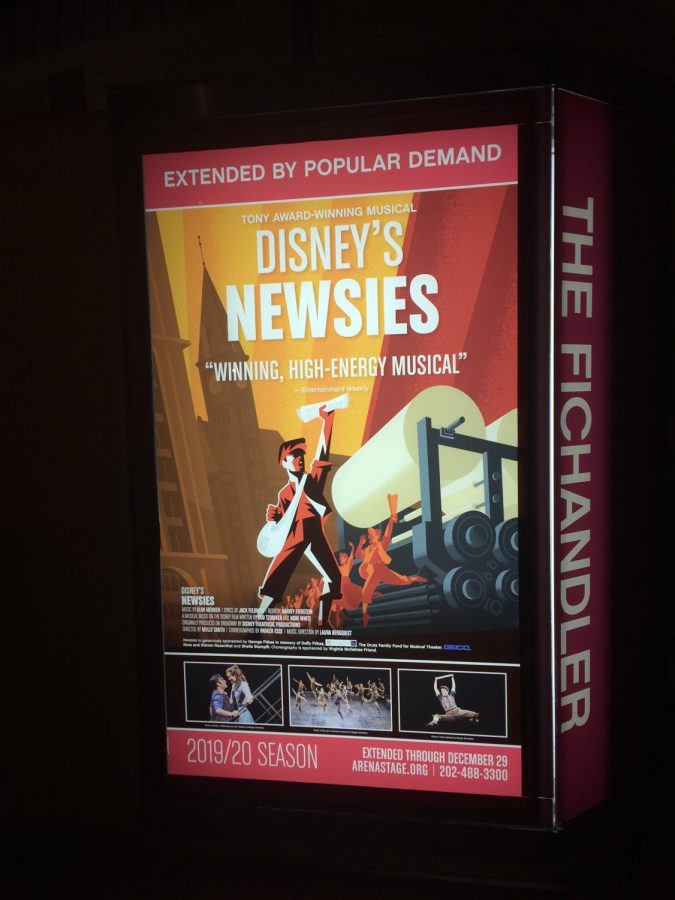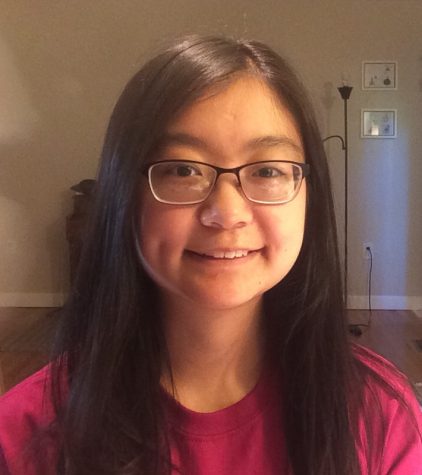Below the stage, musicians accompany Arena Stage’s “Newsies”
Pit musicians are a vital part of productions such as “Newsies,” which runs at Arena Stage until Dec. 29.
December 5, 2019
As someone who has played in the pit orchestra for six musicals, music directed an original one-act play and composed a soundtrack to accompany a Shakespeare play, it’s no secret to me that the instrumental side of theater is, sadly, often underlooked. Look at a theater review or flip through a program. Chances are the review dedicates no more than one paragraph to the musicians, if that. In most professional productions, the musicians don’t receive bios—in some cases, their names aren’t even in the program.
Pit musicians have arguably the most challenging part of a production: they must perfect roughly two hours of music in a matter of days, watch the conductor, turn pages, adjust their dynamics to suit the rest of the pit and the actors onstage and—depending on the instrument—switch between instruments, mutes or patches. They play for nearly the entire show, each and every show, however many shows there are in the run. On top of this, there are rehearsals as well.
Laura Bergquist, Music Director and Conductor of Newsies at Arena Stage, kindly invited me to watch the show from the pit. Based on the New York City Newsboys’ Strike of 1899, Newsies tells the story of several homeless “newsies” working to gain rights for themselves. In a David versus Goliath situation, the children succeed over journalism giants Joseph Pulitzer and William Randolph Hearst.
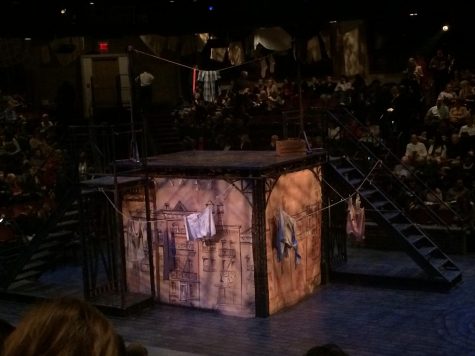
Fichandler Stage features a theater-in-the-round as opposed to a traditional stage. Laundry hangs around the theater to mimic laundry drying in the streets of New York City.
Fichandler Stage, one of three theaters at Arena Stage and the venue for Newsies, features a theater-in-the-round with the pit located entirely below the stage, except for a protruding podium for the conductor. During performances, Bergquist stands with most of her body in the pit but enough of her above the stage so that actors can see and follow her conducting. Located beneath the stage, the 11-piece orchestra consists of players on Keyboard 1, Keyboard 2, Violin, Cello, Guitar, Bass Guitar, Reeds, Trumpet, Trombone, Drums, and Percussion.
As a piano player, I observed from between the two keyboards. Suzanne Román Jones serves as Keyboard 1 for the show in addition to her responsibilities as Assistant Music Director. During cast rehearsals, she played the Piano/Vocal score. “I usually play the same thing in rehearsals and performances, but for this show I’m playing a combination of Keyboard 1 and Piano/Vocal,” Román Jones said.
In musical theater, keyboards often do not sound like keyboards. This is because they are connected to a computer with a program such as MainStage that allows the keyboard to sound like other instruments—these are called patches. By stepping on a pedal, Keyboard 2 player Victor Simonson can switch between around 200 patches while playing.
Each musician has a pair of headphones that allows them to hear themselves, each other and the actors. They can adjust the volume of certain channels to hear only certain instruments. Additionally, the musicians have stand lights to illuminate their music, since the lights are turned off during the show. They also have a monitor allowing them to see Bergquist as she conducts. By pressing a button, they can switch the monitor to see the stage instead.
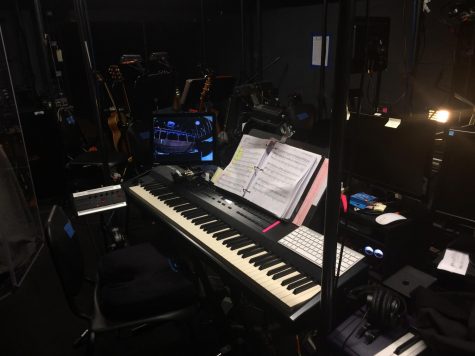
The pit orchestra musicians watch music director and conductor Laura Bergquist on video monitors as they play.
Percussionist Joanna Huling has a separate room from the rest of the pit, located behind the drum kit. Huling plays 33 instruments for Newsies and watches Laura from five monitors scattered around the room. “There are some numbers, like ‘Seize the Day,’ where I play 14 instruments. It’s a lot of switching between instruments,” Huling said. “It’s a fun challenge to keep track of where I’m going and what’s next.”
While Huling has the record for most instruments played during the show, some of the other musicians play multiple as well. Gerry Kunkel plays guitar and banjo, Craig Taylor plays trumpet and flugelhorn, Joe Jackson plays trombone and bass trombone and Rita Eggert plays flute, piccolo, clarinet and soprano and alto saxophone. “I’ve got 63 instrument changes in the show,” Eggert said.
Kunkel and bassist Dan Hall are similar to the keyboards in the sense that their instruments are amplified. Violinist Jennifer Rickard and cellist Aron Rider have microphones trained on their instruments, so Sound Designer Daniel Erdberg can mix their volumes with the rest of the musicians and the actors.
The rehearsal process for musicians is relatively short compared to the rehearsal process for actors. “We rehearsed three or four times with just the band, a couple hours, then we got together with the cast members for a couple hours,” drummer Danny Villanueva said. The first time that the cast sings with the pit is called a sitzprobe.
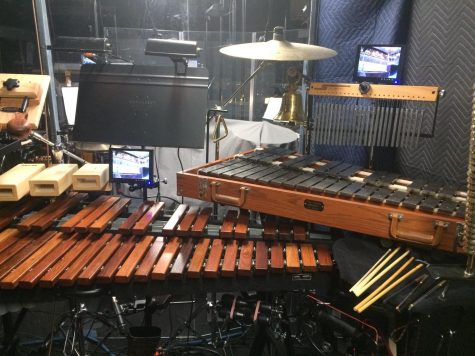
Percussionist Joanna Huling plays 33 instruments in “Newsies.” Located separately from the rest of the pit, there are five video monitors for her to use around the room.
After the sitzprobe, actors add their blocking. “We started doing the tech rehearsals, where they’re actually up on stage and walking through their parts. The rehearsal process was about two and a half to three weeks,” Jackson said. “We had a couple of weeks of previews, that’s a little longer than most theaters do.”
“Once we started previews Nov. 1, we would rehearse in the afternoons and then perform the show at night,” Bergquist said. “We would adjust anything we wanted to if the staging wasn’t working, or I wanted to do a song a little differently, or the choreographer wanted to move people around the stage—that would happen in the afternoon. We opened on Nov. 13.”
Newsies runs until Dec. 29 at Arena Stage. The production is approximately two hours and 15 minutes, with a 15 minute intermission. Tickets can be purchased online or by calling 202-488-3300.



